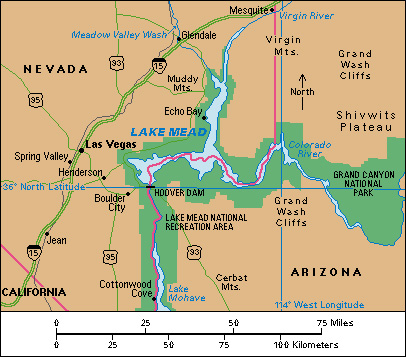Reservoir is a place where large quantities of water are stored to be used for irrigation, power generation, water supply, and recreation. Reservoirs may also serve as a means to control flooding. A reservoir may be either natural or artificial. Natural lakes form reservoirs from which some cities obtain their water supply.

Engineers build artificial reservoirs by constructing a dam across a narrow valley or by digging a basin in a level tract of land. Examples of reservoirs that are made by building dams are those of the Tennessee Valley Authority; Lake Mead, which is impounded (confined) by Hoover Dam; and Franklin D. Roosevelt Lake, which is impounded by Grand Coulee Dam. The capacity of a reservoir is measured in acre-feet or cubic meters. An acre-foot of water represents a volume of water that covers an area of one acre and has a depth of one foot. An acre-foot equals 1,233 cubic meters and contains 325,829 gallons (1,233,482 liters).
Some small cities store their water in large tanks supported on a high framework or in small holding reservoirs. The tanks or reservoirs are built at an elevation above the highest buildings to create enough pressure to force the water to the tops of the buildings. Such tanks are often called standpipes.
